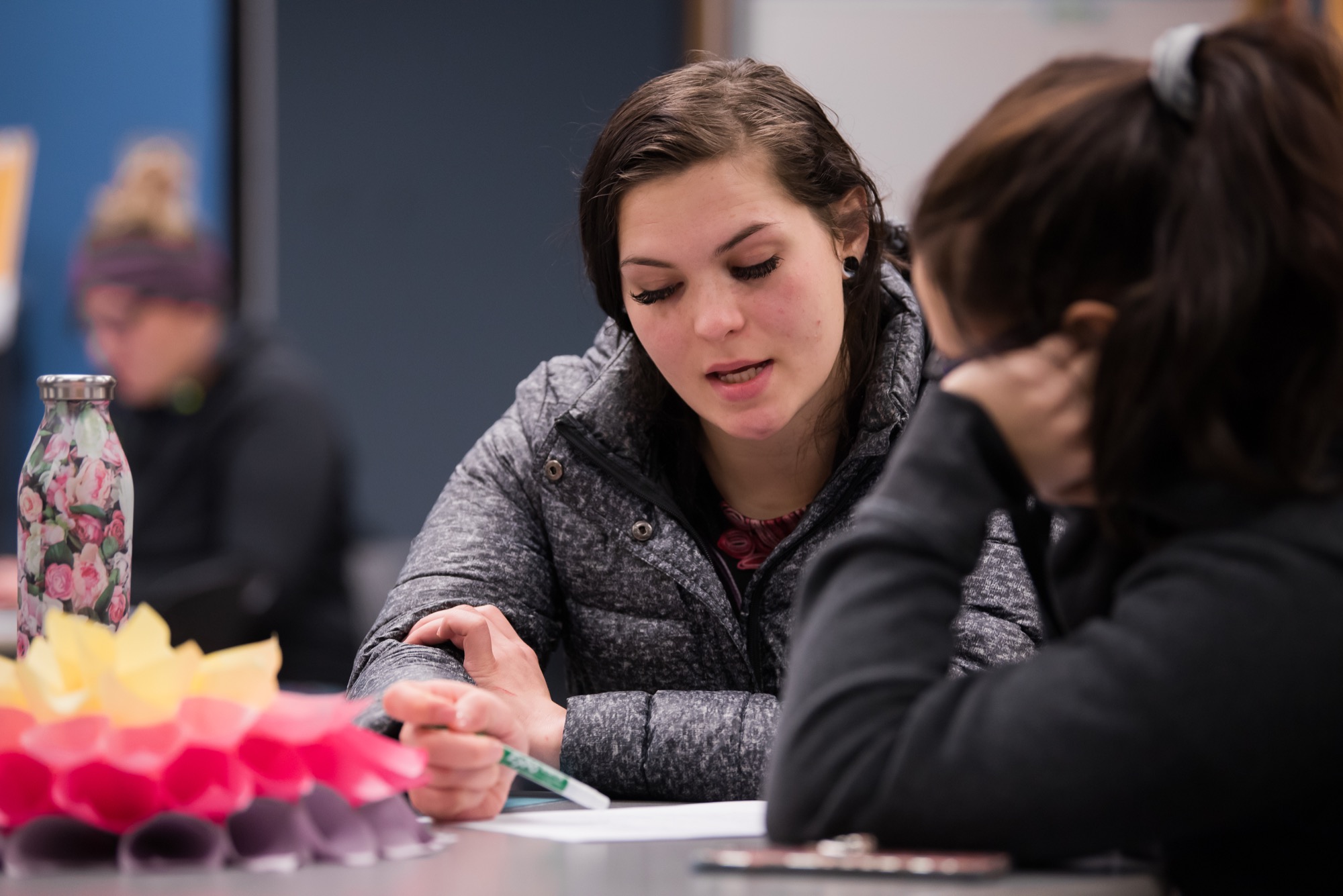A little revamp goes a long way in ensuring student success
by Catalina Myers |

Standardized tests are a highly effective assessment tool to place incoming students into entry-level courses, but sometimes it still takes a person to fully understand and evaluate an individual’s skills and needs. Recently, a surprising statistic from First Year Advising in the Office of Student Success revealed that when writing faculty from the Community & Technical College (CTC) evaluated samples from incoming students, they were able to place them more accurately into pre-general education requirement (GER) writing course sequences.
“What we found is that 70% of the students who submit a writing sample place in a higher class than Accuplacer predicted,” said Claudia Lampman, vice provost for Student Success and dean of the Honors College. Lampman said that while Accuplacer is an effective tool, its greatest strength is its ability to assess. But when it comes to the more nuanced needs of individual students and creating a tailored educational experience, the standardized test falls short, and students slip through the system’s cracks. “So we’ve been exploring for a while now on how we do this better and how we make sure that we’re placing students accurately.”
Since 2017, UAA has been re-evaluating and transforming the GER courses, with writing leading the way. Initially, all GER writing courses were housed in the College of Arts and Sciences, starting with Writing 111. Recently, all Tier 1 GER courses at UAA, including writing, moved to CTC with writing moving to the Department of Writing. Lampman said housing all the GER courses in one college streamlined the process, making it easier for students to complete all their GER courses within one college, rather than spread throughout the university. The faculty in the department of Writing now teach the entire pre GER and GER sequence, giving them the ability to place and teach students throughout their writing journey.
Previously, if students didn’t place into Writing 111 after taking the Accuplacer test, they were required to either retake the Accuplacer or take and pass a prerequisite course before even beginning their GER writing course. This greatly frustrated students and faculty. For students, the additional courses represented extra time and money — a limited resource for many students. On the faculty side, they realized many students who placed below their skill level would significantly benefit from a simple boost, while students who placed above their skill level and were struggling to stay afloat would benefit from a slightly slower-paced class.
“Over the years, writing faculty noticed that students were being placed incorrectly, solely based on the Accuplacer,” said Ray Weber, interim director of CTC. “They started looking for ways to improve that placement rating and get students where they need to be so that they’re at the appropriate level and are receiving the education they need so that they can move through the system.”
In addition to looking at ways to improve the writing assessment process, CTC writing faculty developed Accelerated Learning Programs (ALP) — essentially courses that serve as a bridge from one course to another when a student’s writing skill-level falls somewhere in between two courses. Weber said they streamlined the process so that students who took an ALP class also received credit for the GER course and allowed them to move more quickly and onto courses within their chosen major.
“These programs give students a chance to see what they’re capable of doing,” said Weber. “I think one of the best things we can do for Alaska as a whole is educate people in a better, more efficient way. I think this is worth our time and dollars because it makes sure that students are getting the best service and are being placed where they need to be right off the bat and can accomplish their goals much sooner.”
According to Valerie Robideaux, director of First Year Student Success Initiatives and Alignment and directs the first year advising program, since implementing this new writing assessment strategy, the university has potentially saved students more than $400,000 in tuition dollars.
Robideaux said the university is trying to optimize student success, especially in the first semester, because for many students, not performing well in the first semester can determine whether or not they choose to continue pursuing higher education.
In addition to students taking an Accuplacer test and submitting a writing sample, students also submit a course matching survey, which covers additional student information like major and academic goals, high school GPA, competence level and any other standardized tests they may have taken like the SAT or ACT. The course matching survey also asks questions not generally covered in standardized testing. Robideaux said the course matching survey is another layer to add when creating a tailored educational experience for students, providing them a greater chance of success when attending UAA.
Lampman said re-evaluating and revamping the way the university assesses incoming students for GER courses has been a substantial project. The writing program's success has been encouraging and means the university is on the right track to better help students succeed at UAA. She said ongoing assessment of programs is one facet of fulfilling UAA's accreditation through the Northwest Commission on Colleges and Universities (NWCCU). UAA is committed to educational excellence, which means continuing to improve and support students' success.
“We’ve been doing the standard, but I think we’ve found the right combination of things now that will do a better job for our students,” Lampman said. “Preliminary data are very encouraging. Students are not only getting placed into higher level courses, they are also passing those courses at a higher rate. Placement and writing reform are working for UAA student success.”
 "A little revamp goes a long way in ensuring student success" is licensed under a Creative Commons Attribution-NonCommercial 4.0 International License.
"A little revamp goes a long way in ensuring student success" is licensed under a Creative Commons Attribution-NonCommercial 4.0 International License.













